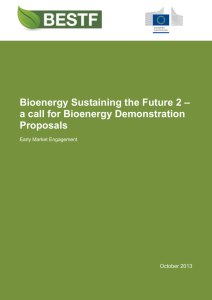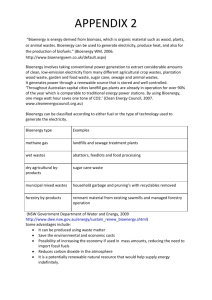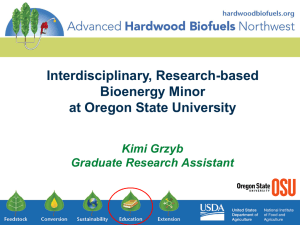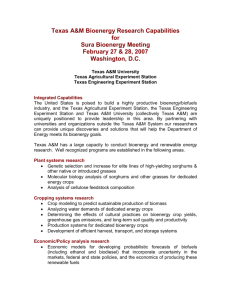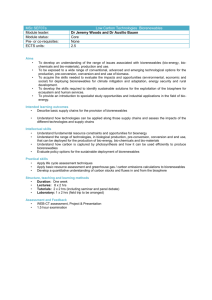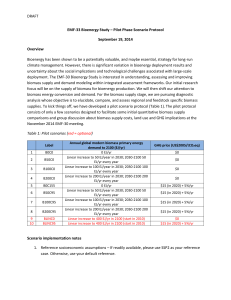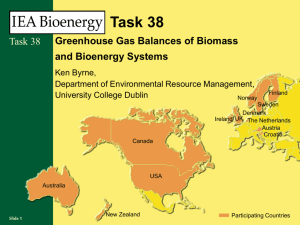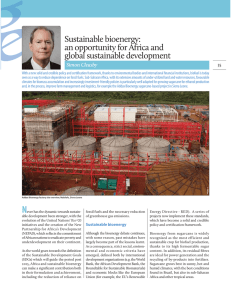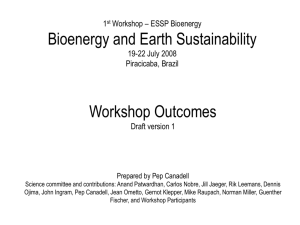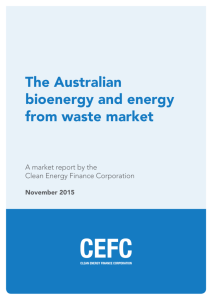Bioenergy - Global Environmental Change and Food Systems
advertisement
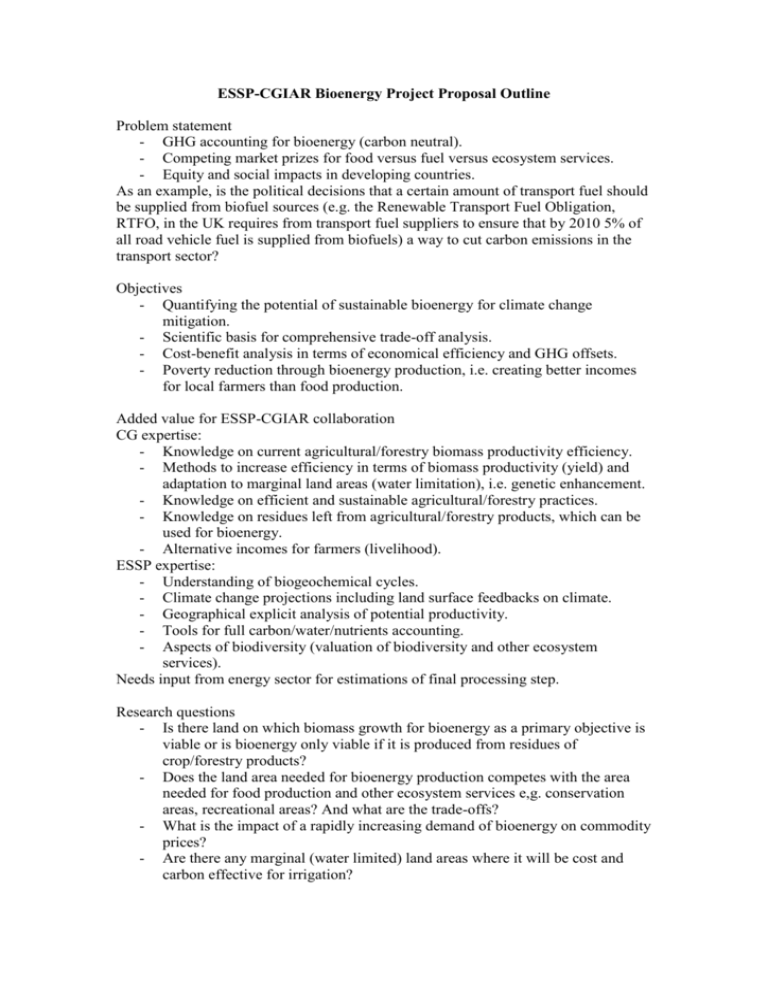
ESSP-CGIAR Bioenergy Project Proposal Outline Problem statement - GHG accounting for bioenergy (carbon neutral). - Competing market prizes for food versus fuel versus ecosystem services. - Equity and social impacts in developing countries. As an example, is the political decisions that a certain amount of transport fuel should be supplied from biofuel sources (e.g. the Renewable Transport Fuel Obligation, RTFO, in the UK requires from transport fuel suppliers to ensure that by 2010 5% of all road vehicle fuel is supplied from biofuels) a way to cut carbon emissions in the transport sector? Objectives - Quantifying the potential of sustainable bioenergy for climate change mitigation. - Scientific basis for comprehensive trade-off analysis. - Cost-benefit analysis in terms of economical efficiency and GHG offsets. - Poverty reduction through bioenergy production, i.e. creating better incomes for local farmers than food production. Added value for ESSP-CGIAR collaboration CG expertise: - Knowledge on current agricultural/forestry biomass productivity efficiency. - Methods to increase efficiency in terms of biomass productivity (yield) and adaptation to marginal land areas (water limitation), i.e. genetic enhancement. - Knowledge on efficient and sustainable agricultural/forestry practices. - Knowledge on residues left from agricultural/forestry products, which can be used for bioenergy. - Alternative incomes for farmers (livelihood). ESSP expertise: - Understanding of biogeochemical cycles. - Climate change projections including land surface feedbacks on climate. - Geographical explicit analysis of potential productivity. - Tools for full carbon/water/nutrients accounting. - Aspects of biodiversity (valuation of biodiversity and other ecosystem services). Needs input from energy sector for estimations of final processing step. Research questions - Is there land on which biomass growth for bioenergy as a primary objective is viable or is bioenergy only viable if it is produced from residues of crop/forestry products? - Does the land area needed for bioenergy production competes with the area needed for food production and other ecosystem services e,g. conservation areas, recreational areas? And what are the trade-offs? - What is the impact of a rapidly increasing demand of bioenergy on commodity prices? - Are there any marginal (water limited) land areas where it will be cost and carbon effective for irrigation? - What is the impact of current bioenergy production on livelihoods and climate as compared to the original land cover? How can bioenergy production contribute to poverty alleviation? What would be the institutional framework for poverty reduction? Research methods - Full life cycle analysis of bioenergy concerning carbon emissions, energy/water use including transport and nutrients. - Global analysis of productive capacity focusing on marginal land areas. - Developing scenarios for global bioenergy supply based on assumptions on food/water/economical/productivity/poverty constraints. - Define threshold areas based on water limitation and project these into the future using GCM scenario calculations. - Hotspots: Coastal areas for easy transportation as a hotspot for bioenergy land areas (e.g. highly productive temperate rainforest along west coast of North America). - Stakeholder involvement: private sector (land owners), energy institutions and companies - Stakeholder involvement: governments o understanding the potential capacity of bioenergy use. o problem of overselling in terms of land value for energy production (need for regulatory policies). Expected outputs: - Sustainability criteria for bioenergy based on nutrient depletion from multiple harvest, carbon emissions, poverty reduction. - Project design tools taking account of land productivity, proximity to transport infrastructure and markets. - Guidelines for policy-makers to provide incentives o to guarantee food production based on market values of bioenergy compared to food. o to protect conservation areas and biodiversity. - Legal directives for land sustainability (prohibit land degradation). - Socio-environmental impact assessment of bioenergy (e.g. toolbox). - Market mechanism to promote sustainable bioenergy. - Impact of current bioenergy policy on local farmers/livelihoods/GHG budgets. Potential link to the disease project: Potential of dead biomass from pests/diseases for bioenergy production. Currently there is a loose-loose situation as the carbon from this dead biomass is emitted to the atmosphere by biomass burning creating an additional carbon source.

